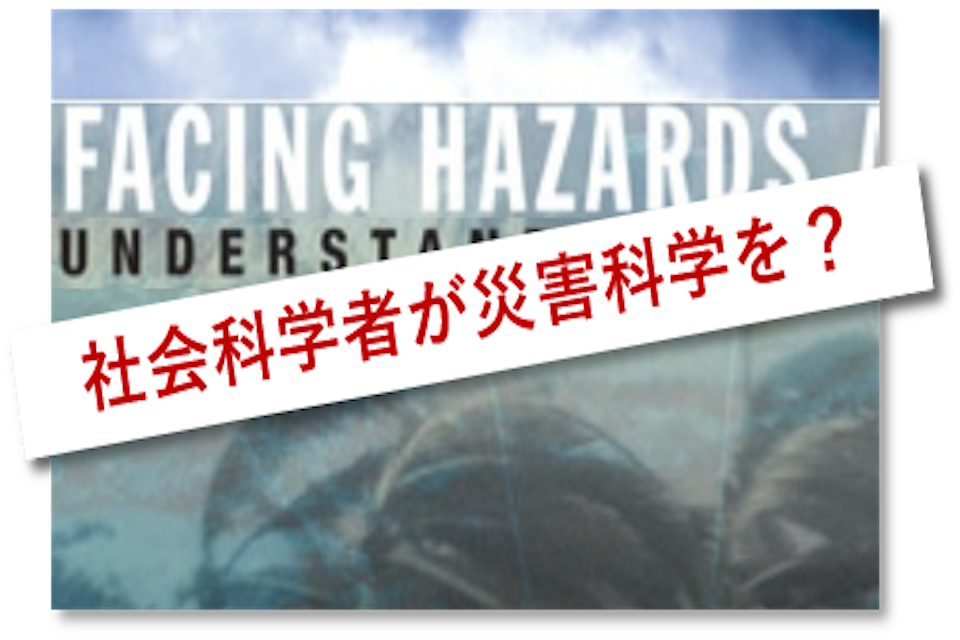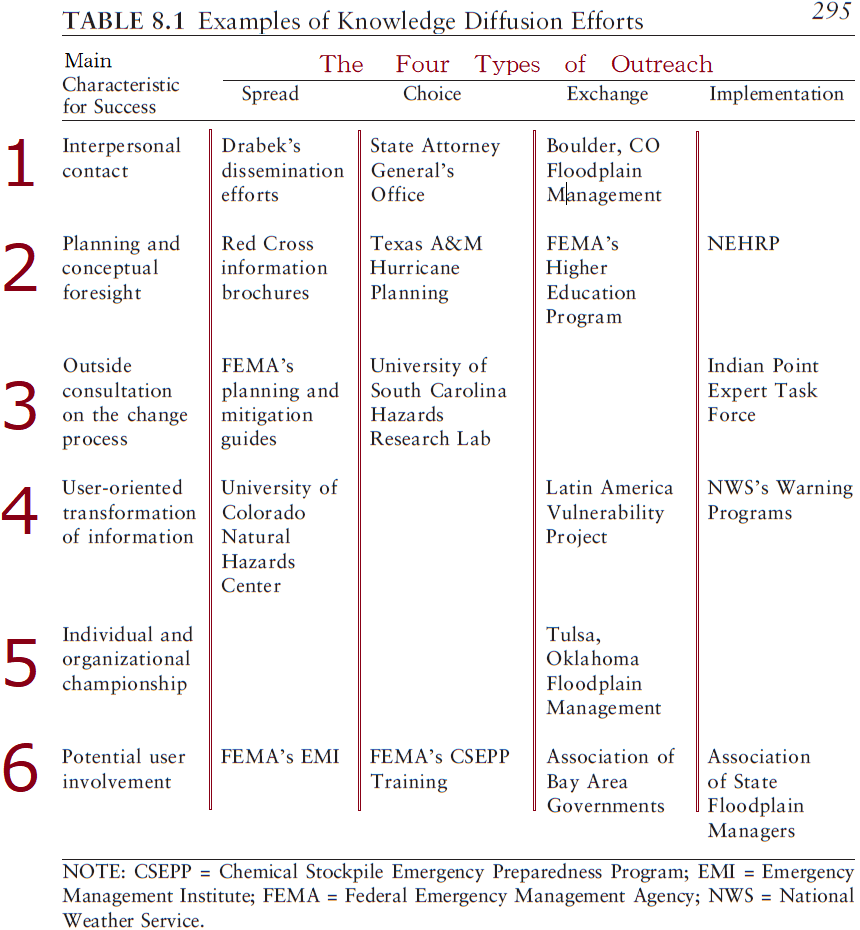03-6272-4372営業時間 9:00〜18:00
防災メディア

Using Social Science for Disaster Response
2017/07/25
Social scientists have a lot to contribute to disaster science. About 10 years ago the 409 page report from the National Research Council (National Academies of Science, Engineering, and Medicine) was published. The PDF is downloadable at www.nap.edu/11671 and includes Appendix B (page 398) with all 38 recommendations from chapters 3~9 for better emergency planning and disaster management; not only in USA, but also collaborating with foreign partners, too, since many disasters are only once in a lifetime. The PDF publication can be downloaded free; the print edition is priced to pay for printing and mailing costs.
The report begins by describing what kinds of things disasters teach us about behavior in stressful times of danger, uncertainty, discomfort and grief. And there is a lot from experts in economics, social organization and culture, group psychology, communication and decision-making that can contribute to the work of disaster management. However, the true number of connections between researchers and the disaster response community is not very many. There are a number of full-time researchers at places like the University of Colorado-Boulder (National Hazards Center, https://hazards.colorado.edu), the University of Delaware (Disaster Research Center, https://www.drc.udel.edu), and the Southern California Earthquake Center (SCEC, https://www.scec.org). Then there are others who may get involved in certain cases (Periodic Researchers), as well as others who connected accidentally or incidentally due to a situation they become touched by.
So raising up a new generation of social science researcher is one goal of this report. Another one is to build more bridges for research from campus to go into the hands of practitioners who professionally manage the actual emergencies and larger disasters. Both sides can learn from each other. So the report gives many examples and recommendations for four kinds of outreach to and from the university researchers: “spread” means the campus pushes out the information, “choice” means that outsiders seek answers from the university researchers, “exchange” means a dialog between researchers and disaster management professionals, and “implementation” is active leadership by researchers in the work of the disaster management professionals. Examples of each type of public communication are summarized in table 8.1 (below) and these are discussed on page 310 of the pdf publication.
Since the breakthrough in the 1970s of the Incident Command System (ICS, http://en.wikipedia.org/wiki/Incident_Command_System) the whole country’s emergency managers at all levels have mastered the working vocabulary and relationships. And to receive national money the local governments must follow the NIMS (National Incident Management System, http://en.wikipedia.org/wiki/National_Incident_Management_System), including the ICS. Other countries, too, have created similar systems to coordinate various sorts of emergency responders, levels of government, and types of hazards with scalable responses. But over the years there have been examples of civilian, volunteer, and military teams using the system with different degrees of success. So the report recommends social scientists to study other management models –not to command but to coordinate the teams; not a pyramid structure but a flat and flexible structure, for example.
Several of the recommendations in the report press for better international partnerships in order to increase the number of real-life operations to study; not waiting for one to occur in one’s own society. Communicating the results of social science observations and measurements of pre-and post-disaster actions can benefit colleagues in many languages and locations, so the authors of this report recommend cross-cultural comparisons of planning as well as actual management of disaster responses.
Of course there is a careful balance between disaster science research and interfering with responders and managers. But so much can be learned that this effort to document, compare, and test ideas is worthwhile. Even though the 2006 publication seems old, the problems and recommended actions are still important to make better preparations and responses to the increasing numbers and severity of disasters, both the natural and the human, intentional kind.
サイエンスクラフトとは...
サイエンスクラフトは防災計画の作成や防災訓練支援を数十年に渡って行っているコンサル会社です。お問い合わせはこちらまで。






